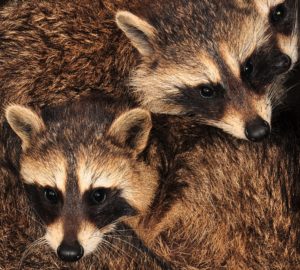Photography courtesy of Lowell Washburn, all rights reserved.
As predictable as April showers and May flowers, Iowa’s Baby Bird & Bunny Season is about to begin. From early May until mid-summer, wildlife babies from dozens of species will be leaving the protection of their nests and learning the outdoor skills critical to their survival. Before the season ends, Iowa DNR and County Conservation offices across the state will be inundated with hundreds of reports and scores deliveries of “orphaned wildlife”. Surprise deliveries – often dropped off anonymously –will include everything from fawns and raccoons, to cottontails and baby ducks and, yes, even an occasional litter of highly aromatic skunk kittens.
Although unfortunate, it’s easy to see how that happens. From fuzzy yellow ducklings to tiny baby bunnies, nothing appears more cute and cuddly than a baby animal. It’s really no mystery why humans feel compelled to come to their rescue. But in reality, the vast majority of wild babies that people encounter are not really orphaned at all. And while those folks who attempt to “save” these babies may have the very best intentions, they are in fact dooming the very creatures they intend to help.
Regardless of whether they are birds or mammals, the young of most wildlife species leave their nests or dens well in advance of being able to care for themselves. Although broods or litters may become widely scattered during this fledgling period, they remain under the direct care and feeding of their parents. Unfortunately, this care is abruptly terminated as youngsters come in contact with humans.
Whenever a newborn fawn, nest of infant cottontails, or den of baby raccoons is discovered, it is most often assumed that the animals are orphaned. The fate of these youngsters becomes sealed as the hapless creatures are promptly “rescued from the wild”.
Most wildlife babies will perish soon after capture — often from the stress of being handled or confined. Should an animal survive the initial trauma, it often succumbs more slowly to pneumonia, other diseases, or undernourishment.
Whether adults or young, all species of wildlife have highly specific needs for survival. “Rescuing a baby from its mother” not only shows extremely poor judgment — it is also illegal. Observing native wildlife in its natural habitat is always a unique privilege. Making field notes or obtaining a good photo or two provides an even more lasting memory. But once you’ve done that, let well enough alone and leave wildlife babies where they belong — in the wild.



 Tom Cope
Tom Cope Sue Wilkinson
Sue Wilkinson Susan Judkins Josten
Susan Judkins Josten Rudi Roeslein
Rudi Roeslein Elyssa McFarland
Elyssa McFarland Mark Langgin
Mark Langgin Adam Janke
Adam Janke Joe Henry
Joe Henry Kristin Ashenbrenner
Kristin Ashenbrenner Joe Wilkinson
Joe Wilkinson Dr. Tammy Mildenstein
Dr. Tammy Mildenstein Sean McMahon
Sean McMahon